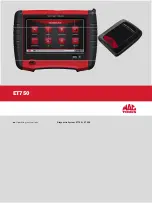
Compass UK & Ireland
Workplace Safety Management System
Safety Task Card
STCGE 07
Unit Managers – use page overleaf to list any hazards and control measures specific to your site which are not listed below
Safe System of Work
1. Stand well clear of the rear of vehicles when cages are being unloaded by delivery personnel.
2. Visually check roll cages before use. Make sure wheels are clean of debris and free running.
3. If a cage is in poor condition, offload items onto another cage that is in good condition.
4. Badly loaded or overloaded cages should also be offloaded (partially or completely as
appropriate) on to another cage before being moved.
5. If brakes are fitted, these should be on when the roll cage is being loaded or unloaded or when not
in use.
6. Stack heavier goods at the bottom of the cage to ensure stability.
7. Multi-shelved roll cages should be loaded from the bottom upwards, with heavier goods on the
bottom shelf.
8. Do not load above the load line or above the level where you can see over the load.
9. Where provided, opening gates on cages must be securely in place before moving.
10. Where gates are not provided use straps to pull the sides together and help prevent the load from
falling through the open sides if necessary.
11. Align wheels with the direction of travel before moving the roll cage.
12. Always make sure the pathway is clear.
13. Only ever handle one cage at a time, always using the handles, if provided.
14. If possible, routes with uneven surfaces, ramps or steps should be avoided. If this is not possible,
or when a cage is heavily loaded, ask another person to assist.
Use of roll cages
If you have any concerns, stop and speak with your line manager before proceeding.
What are the hazards and how might they harm?
What other precautions should be taken?
Clean up any spillages immediately
What PPE should the individual wear?
Crush and impact injuries to
limbs from falling items
Back and muscle strain
from manual handling
Slip injuries from spillages
Cuts, puncture wounds,
lacerations from contact
with sharp items
Slip injuries from spillages,
trip injuries from obstructions
Crush injuries, bruises,
fractures caused by collisions
Continued on reverse
WS.STC.GE.07.01




















